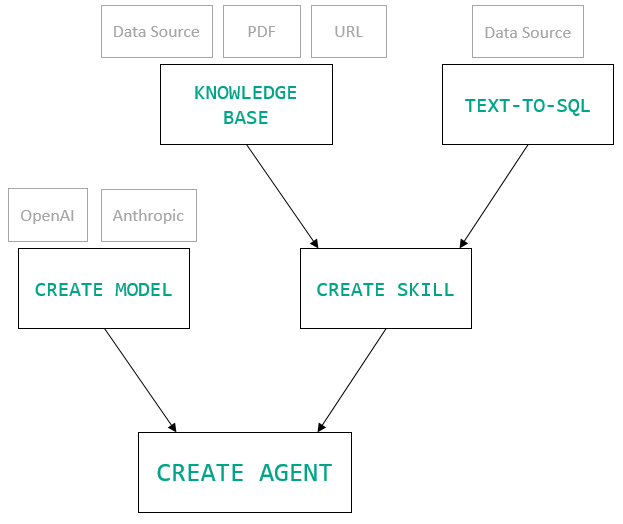
How to work with AI agents
Create skills
Start by setting up the skills. Here is how you can create and manage skills using SQL API.-
Creating, inserting into, updating, and deleting a knowledge base:
-
Creating, updating, and deleting a skill that utilizes a knowledge base:
-
Creating, updating, and deleting a text-to-SQL skill:
Create an agent
An agent can be created, deleted, queried, and updated. Here is how you can do that using SQL API.-
Creating an AI agent:
-
Updating an AI agent:
-
Deleting an AI agent:
Example
Agents with Text-to-SQL Skills
Start by creating a conversational large language model to be used by an agent.Learn about chatbots here.

